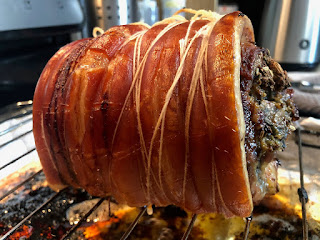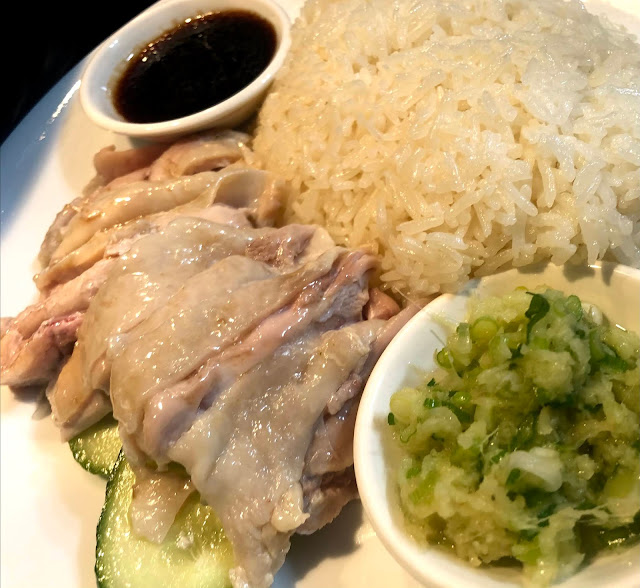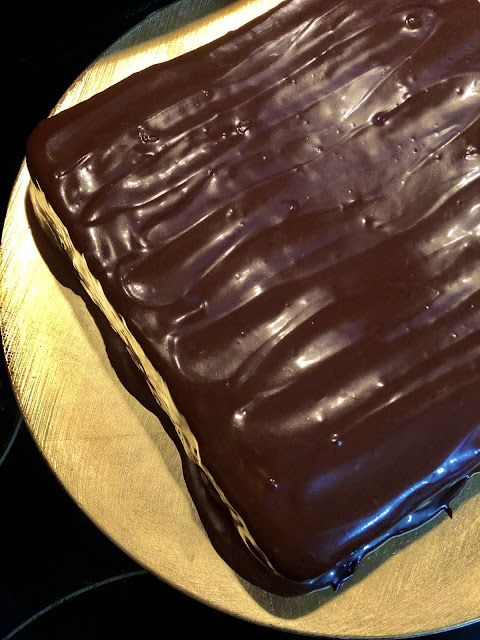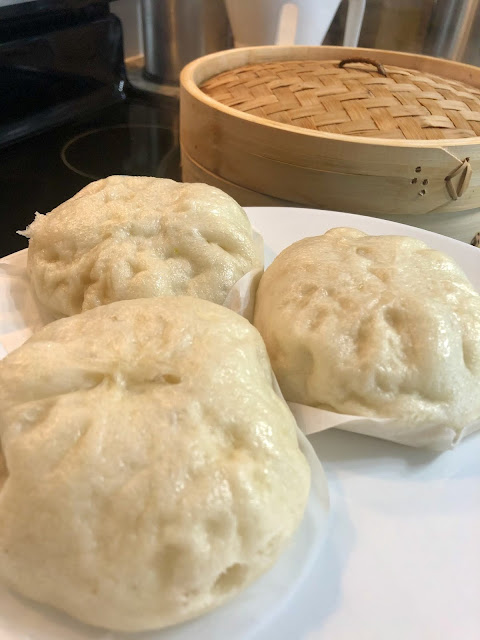Recipe: Porchetta
Let's stare at this for a moment and appreciate this wheel of love.
I blame Florence for my year-long craving for porchetta. We took an amazing trip to Italy and we had the best ever sandwich that blessed this beautiful earth. I literally went from hearing all the birds chirping to complete-silence confusion because of that sandwich. So I tried to recreate it - I'll post the Porchetta Sandwich recipe in another blog entry. You can read more about the Florence segment of our whole trip in my other entry, Travel: Florence, Italy.Pork belly. Who doesn't love it? From bacon, chashu on ramen, grilled liempo, crispy fried lechon kawali, adobong baboy, pork sinigang, and of course,.... the Porchetta. (Woah. 😳 That took a lot from me to stay calm and name those dishes without unleashing my hanger. I felt a slight grumble though. Not gonna lie.)
Porchetta is a fatty, savoury, and aromatic Roman dish specifically from Ariccia, a city just outside of Rome. It comes from the Italian word "porco" or pork. Traditionally, it was made of a whole pig that's deboned, rolled, and roasted on a spit with traditional flavours of rosemary, salt, pepper, wild fennel, and some also included the pig's organ meats. During the ancient Roman times, it was even said to have been cooked underground. But nowadays, it's modernized cooking and preparation has led itself to the oven. And the home cooked version? Well, we can't fit a whole pig in our teeny-weeny ovens so we stuck to the succulent cut, the belly. Oh! And a bit of trivia. This dish was said to be Emperor Nero's favourite dish. He'd even have it served to the Roman army - but they'd get the part with the organs.
Now I've always had an internal debate with how to pronounce this. I've heard it so many different ways even when we went to Italy. I was honestly secretly listening to the locals pronounce it. But still, that didn't help. Is it "por-ke-ta" or "por-che-ta"? I even read an article saying that it would depend where you come from in Italy. Another article said that the Italians pronounce it with the "k" sound instead of the "ch". That the "ch" sound was mainly an Americanized version of the word (i.e. like saying "bruschetta"... imagine a scene from Clueless saying "broo-shet-tah" 😂). What I do know is that in pronouncing words in the Italian language, words with a "ch" in the spelling, the unanimous pronunciation is with a "k". So I guess it really is "por-KEH-tah".
This is best eaten (and finished) the day it was roasted. Of course, this is still wonderfully satisfying if cold or reheated. It will still have the crunchy and crispy skin and the tender meat. Served on bread and made into a panini (a toasted Italian sandwich, with an Italian bread such as a ciabatta or schiacciata).
In any case, this dish is just a a full-on experience from start to finish. I'm not going to lie, it will take a while. And you have to be patient. But when you take that first slice and slowly appreciate it, chewing it slowly in your mouth, the wait and labour will all be worth it.
==========================================
Porchetta
This recipe is for a small slab of pork belly - probably 1/4 of the full belly taken from a pig's carcass. It's best for 3-4 people.
You'll need a small bowl, a chopping board, a sharp knife, a plastic container/Tupperware, a roasting pan (I didn't have one so I used a wire rack on top of a baking sheet or dish), some butcher's twine, and some patience. Literally, overnight patience.
Ingredients
1.5 - 2 kgs pork belly slab
2-3 tbsp fennel seeds, toasted
10 garlic cloves, grated
2 tbsp thyme, fresh and stemmed
1 tbsp oregano, dried (you can also use rosemary instead)
lemon zest (optional)
2 tsp salt
2 tsp pepper
Procedure
1. Combine all the herbs and seasoning in a bowl. Set aside.
2. Place the belly skin-up down on the chopping board. Score the skin ONLY with the tip of your knife - do not slice through to the fat. Turn it over and score the meat diagonally both ways to make a crisscross pattern. You can deepen the slices in the meat side.
3. Work in your spices on the meat side. Really get in there and make sure that all the crevices are covered with your spice mix.
4. Roll the belly skin-side out and secure the roulade (a French term to mean a dish cooked and/or served in a roll form) with the butcher's twine. Don't be shy with this. Keep securing it.
5. Place in a container and let this sit over night in the chiller/fridge, uncovered. This will allow the skin to dry up. (When the skin dries up, it produces a crispier product because you're taking out the moisture. This is the same concept as salting the skin, to draw out the moisture.)
 |
| (before chillin' in the fridge) |
 |
| (after chillin' overnight) |
7. Increase heat of the oven to 450℉ and roast for another 20-30 minutes. You'll literally hear the skin crackling. (This made me do a little dance in the kitchen.)
8. Okay... the hard part. Waiting. 😳 You need to let the roast rest for about 10-15 minutes. You need the juices to settle. Once you're done waiting, snip off the twine and slice through - it's easier if you're wearing a glove on the other hand to hold that glorious meat in place.
-------------------------------------------------
*Do a blade tap test on the crackling and you'll hear music. If it sounds great (like high-pitched, it will crackle great. Even when you chill it, it will still have a good crackle when heated.
***As much as it is yummy AF in a sandwich, you can also serve this as a dish on it's own. Even include it in an antipasto spread, just slice it very thinly. If you're a bigger family, you can definitely do this with a bigger slab of pork belly and adjust the spices. And don't be scared - the only essential items you should have are the fennel, salt, and pepper. You can add as much other different herbs and spices as you like. Even add some chili flakes while you're at it!
#donyaluzee #food #recipe #porchetta #roulade #pork #porkbelly #fennel #oregano #salt #pepper #homemade #roast #butcherstwine #twine #crackle #crackling #porckcrackling





























Comments
Post a Comment